This post contains affiliate links (I get a commission at no extra cost to you for purchases made through links in this post).
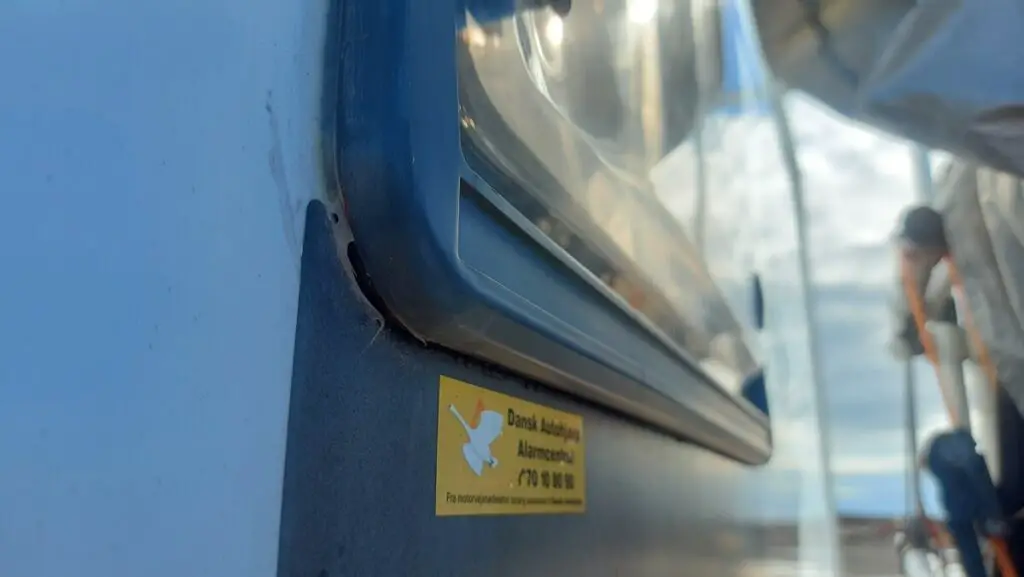
You can choose among numerous sealants on the market to seal an RV roof, including silicone. However, it is not recommended and should be avoided at all costs.
You shouldn’t use silicone to seal your RV roof because it doesn’t last long and leaves residue behind, preventing other items from sticking. It doesn’t cling well to the roofing material. It forms the ideal environment for grime and dirt to accumulate.
This article discusses the reasons why silicone-based sealants are bad for RV roofs, what to look for in a quality sealant, and some of the best alternatives to silicone to seal an RV roof.
7 Reasons Why Silicone-Based Sealants Are Bad for RV Roofs
Silicone is one of the most commonly used products for sealing RV roofs. However, when sealing an RV roof, you must consider a few things, such as roof material, environment, and the type and size of the damage.
Plus, there are several reasons why silicone should not be used. The following are the main disadvantages of using silicone-based sealants on an RV roof.
1. Silicone leaves behind a residue:
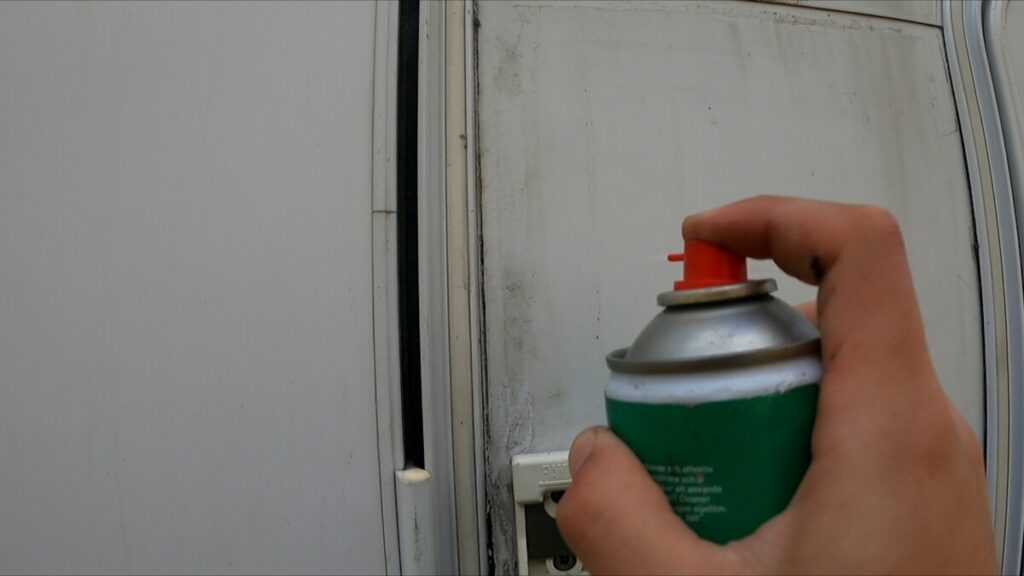
The residue that remains after installing silicone on the roof of an RV doesn’t allow for anything else to stick to it, even additional silicone. This hinders the chances of future repairs being successful.
2. Silicone draws in dirt.
Silicone attracts dirt and other airborne particles more easily than any other sealant. This accumulation of dirt will eventually result in the silicone not living up to the reflective properties. The build-up of dirt also enhances the vulnerability of the roof to the sun’s heat. This can lead to an adverse effect on the internal temperature of the RV and the cooling costs.
3. Silicone can give your RV roof a slippery surface.
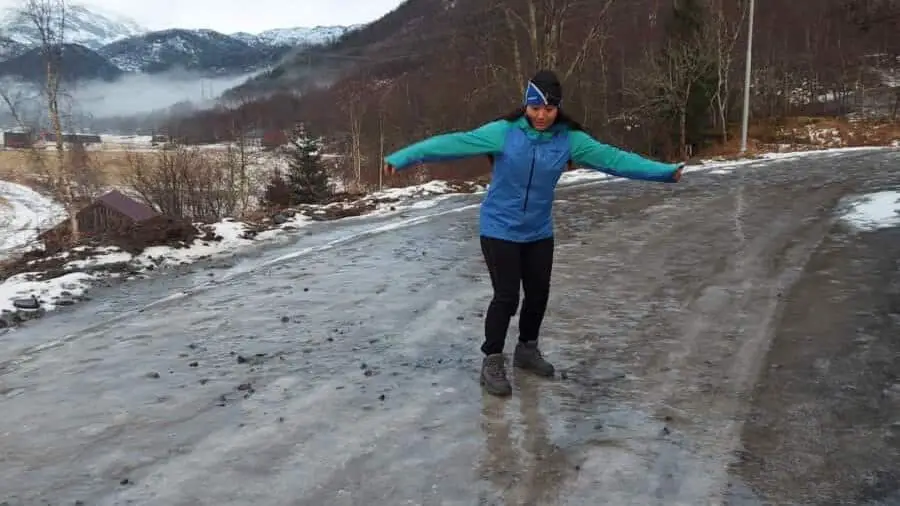
It happens when the silicone gets wet. This is important if you’re planning to construct a deck or other suitable space on the roof. Moreover, it’ll make cleaning your RV roof dangerous, especially when you have to climb up to remove debris.
So let’s not make our RV roof as slippery as the roads in Norway during autumn or spring. As you can see in the picture above, we don’t want that feeling when we are up on the RV roof!
4. Silicone is challenging to apply.
Silicone uses moisture from the air to cure. This is known as a moisture cure, which leads to the silicone drying out too fast. Moisture cure has its benefits. However, this process makes applying silicone on the roof very challenging and more important only to seal small areas at the time.
5. Silicone is difficult to use with a spray
Hydraulic spraying equipment has challenges functioning when liquid silicone is being used. Problems will occur during installation if it isn’t cleaned and maintained properly.
Although this won’t be something for us DIYers to worry about since we probably won’t have that type of equipment anyway.
6. Silicone is not suitable for large surface areas.
Silicone was not developed as a sealant to cover large surface areas. Spreading silicone over an expanse or too thin will result in the sealant’s effectiveness deteriorating. Moreover, it can be too costly to apply large amounts of silicon over a large area.
Although that is one of the few good applications we have for silicone-based liquid sealants for RV roofs that we have, which makes it even more important to apply it thick enough; more on that later on.
7. Silicone doesn’t last for very long.

Once applied to aluminum or glass, it begins to peel easily. This we noticed around one of our windows and everywhere else we applied it when I used silicone to seal up our RV in a rushed emergency project just before we moved in.
And now, I have the time to redo it properly and do the research needed on what types of sealants are the best and which ones to use in different places.
When Silicone Could Be A Good Option For RV Roof-Liquid Coating
In short, silicone chaulking should never be used on an RV roof to seal up seams or seals, but when it comes to the big flat area of your roof and if the whole roof is getting old with small cracks that you barely see and you know it could be a good option actually to change the whole roof.
But if you want to give your roof another couple of years before getting into changing it altogether, well then you could use a liquid silicone coating such as flex seal (Amazon affiliate link) or liquid rubber (Amazon affiliate link), or if you have an aluminum roof, an elastomeric coating like Ames (amazon affiliate link)
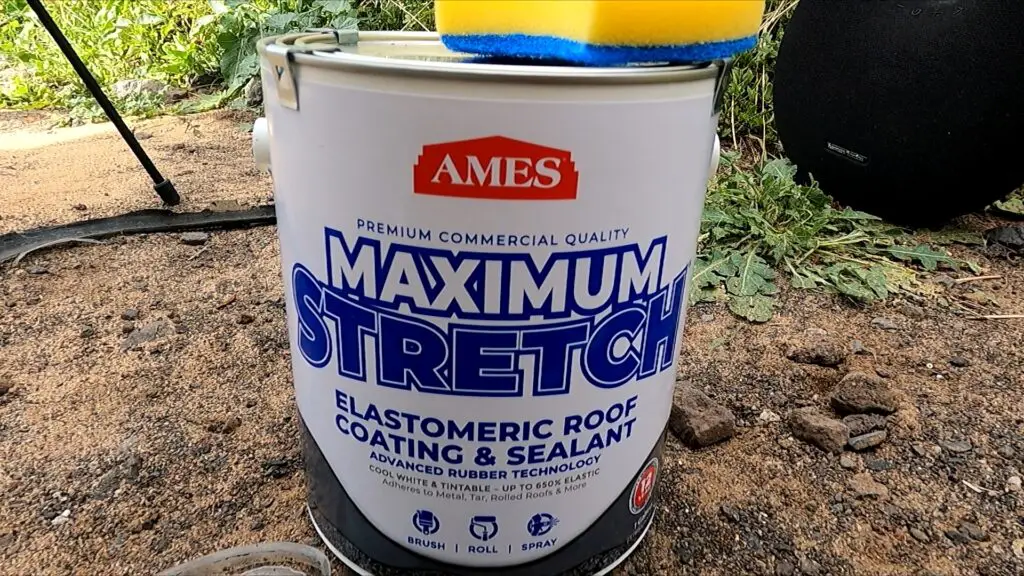
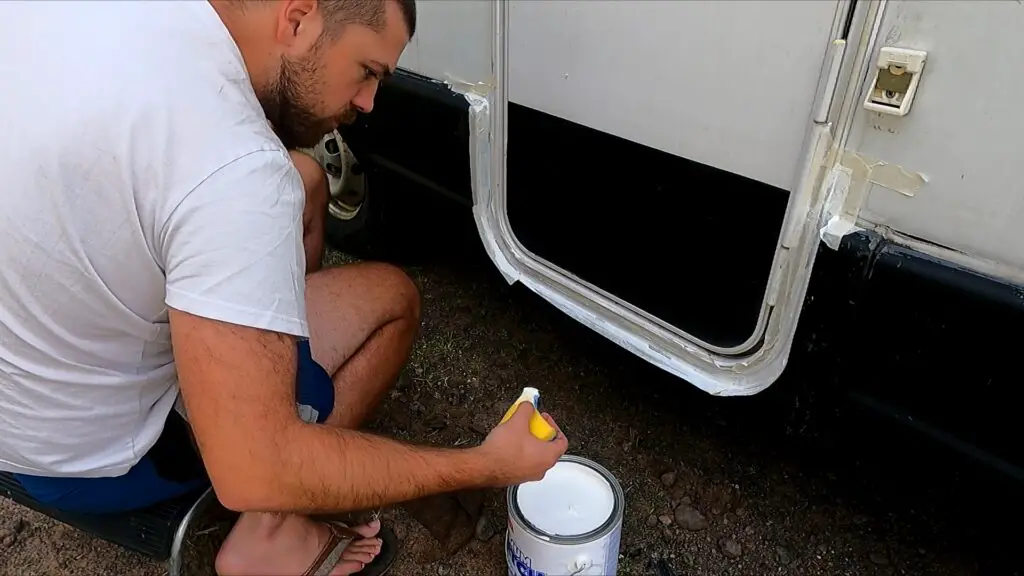
Since I got an aluminum roof, I use Ames elastomeric coating, and when I was resealing the door with SikaFlex I noticed that I had a lot of scratches and damage to the aluminum wall, so I also used it there.
Applying a coating like this could be a last resort. Before doing this, I would seriously start by resealing all the seems with the Sikaflex and/or Dicor self-leveling lap sealant, which I will talk more about at the end of the article, do all of that work well, and then get on with the coating over the flat surfaces.
Remember that those coatings that you will need to paint on will have the seven disadvantages that we talked about previously, but for this reason, and if done right, we have a good reason to use a silicone-based sealant on our RV roof.
What To Consider When Sealing an RV Roof
After understanding the downsides of using silicone as an RV roof sealant, you must also consider the other requirements for more suitable material.
Service Life
It can be very expensive when your RV roof requires repairs, and it needs sealant. One that will last as long as possible will always be best. A cheaper alternative would save money in the short term but cost you a lot more in repairs later on.
Moreover, cheaper sealants could result in more severe and expensive damages to the RV’s interior if they do not do a great job; I like to use cheap things for most projects, except RV roof sealing; I prefer spending extra money and doing it right because I know it will save me money in the long run.
Ultra-Violet Reflection
A major contributor to the breakdown of silicone is ultraviolet rays. The silicone that has ultraviolet reflective properties decreases the internal temperature of the RV’s cabin while extending the service life of the silicone.
A reflective silicone must be installed away from direct sunlight, which will lead to the silicone not drying properly. This drying process is required for the silicone to be effective.
Therefore, it’s best to choose a non-silicone-based sealant with UV-reflective properties.
Ease of Application
Silicones and some other sealants tend to be difficult to spread. They often require a caulking gun or a paint roller. You must choose a sealant that’s compatible with paint rollers or won’t need substantial effort to apply using a caulking gun.
Flexibility
The roof of an RV will contract and expand depending on the temperature. Rigid sealants might begin to rip as the roof expands, resulting in water leaking into the RV. Select a flexible sealant that will move with the expansion of the RV roof, reducing any potential for damage.
Best Alternatives to Silicone for RV Roof Sealing
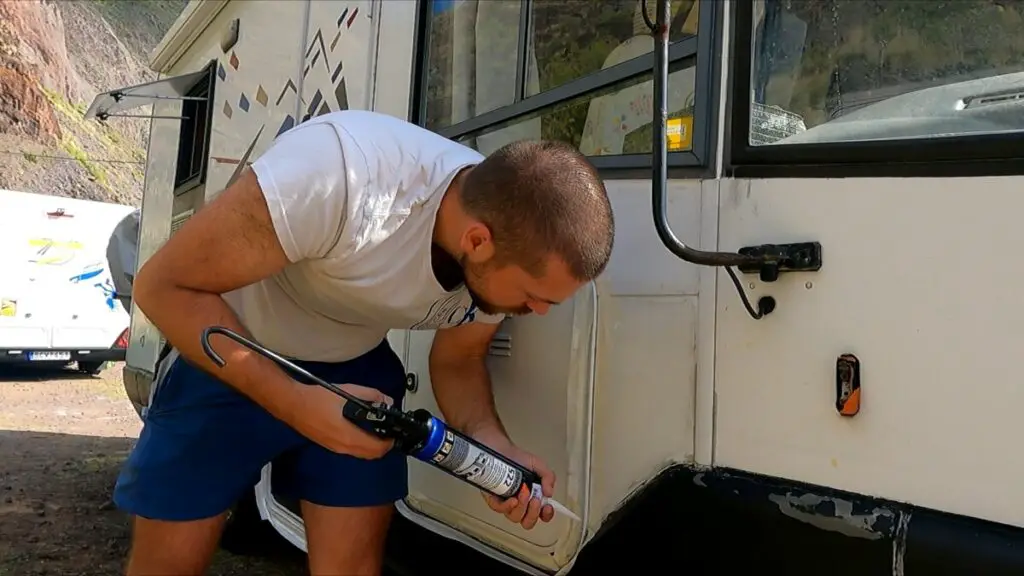
SikaFlex 522 or 221
This is my all-time favorite regarding adhesive sealants; SikaFlex is one of the most popular and recognized brands in the RV industry in Europe. All RV shops or technicians I have talked to have been using SikaFlex.
Im using SikaFlex 522 (new version of 221) now in a project to reseal my whole RV, and I used their montage adhesive SikaFlex 554 to attach my solar panels to the roof. It’s the best product I have encountered for RVs. The only problem is that sometimes it can be difficult to find the right one.
Dicor Self-Leveling Lap Sealant
This sealant seals all sources of leaks located on an RV roof, including screw heads, vent pipes, edges of the roof, and fans. It also clings to roofing materials such as aluminum, fiberglass, vinyl, and metal. Please note that as it is self-leveling, the surface should be horizontal and flat.
This is a sealant we Europeans are not accustomed to, but after reading up on it and watching plenty of videos about it, this is a solid second favorite.
In the best of worlds, I would redo all caulking seals with SikaFlex replace any lists, and then use this lap sealant as a cover on top that is easier to maintain, remove and apply new when it’s time for it, making sure that my RV roof would never leak and it would be easy to reseal.
EternaBond Tape
The seal that is created between this tape and the roof is so strong that only a monumental effort can separate them. In addition to the superior seal, EternaBond tape is also air-tight and waterproof. It is great for sealing during the winter season. No maintenance is needed on this product.
This should be applied as an emergency repair or to help seal a hole, crack, or something similar, but not as your regular sealing job on the roof.
It will be horrible to remove all the Eternabond tape in a couple of years when it’s time to reseal it compared to scraping off the Dicor self-leveling lap sealant and applying new or just applying more Sikaflex onto the old seal.
ProFlex
This is a non-silicone-based sealant and will not leave any residue after installation. The seal created is watertight. However, it was developed mainly as a sealant for around windows on an RV, but can be used to seal around any opening found on the roof.
Conclusion
It is not recommended to use silicone to seal an RV roof. Too many drawbacks lead to more challenges with repairs. Silicone breaks down too quickly and can not be applied over a wide surface area except in liquid form.
It would be best to consider RV roof sealants that last long, are flexible, and can reflect ultraviolet rays, as they will be consistently impacted by the sun. Other considerations include the environment and mode of application.
A combination of the sealants mentioned above is what I would recommend, using SikaFlex to redo the seals, change the rubber lists to protect the screws underneath, and then go on with a second sealing layer of Dicor lap sealant that you can easily change when its time in a couple of years, and keep some eternabond tape for emergency repairs or to seal holes in a combination with the lap sealant.
Here are three other articles I have written that I think you will also be interested in and that I would recommend you check out before you start resealing your RV roof;
